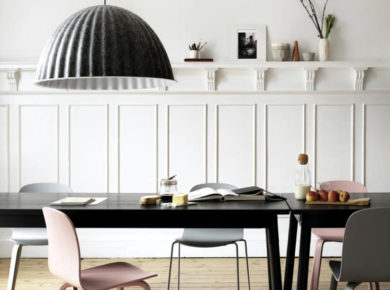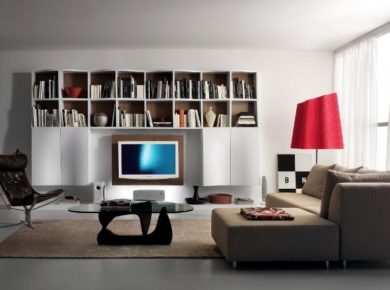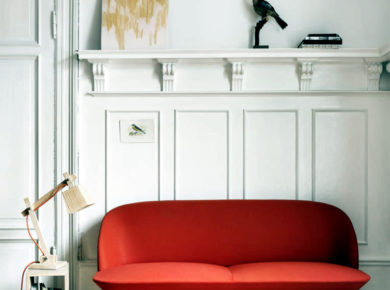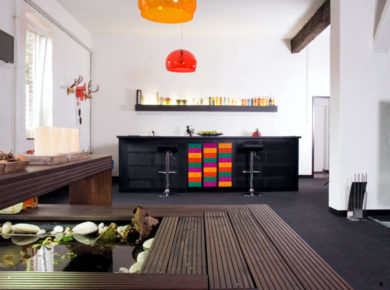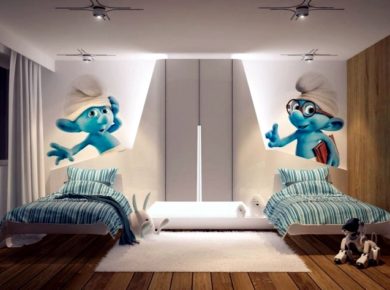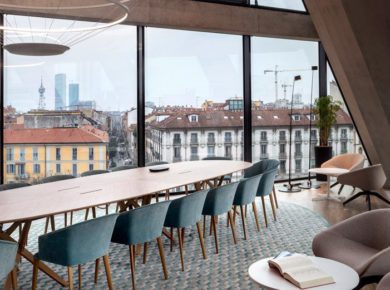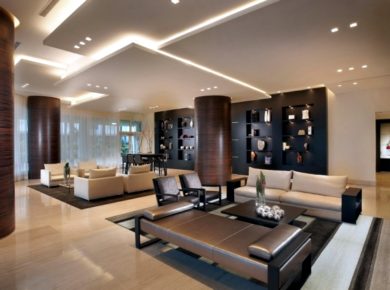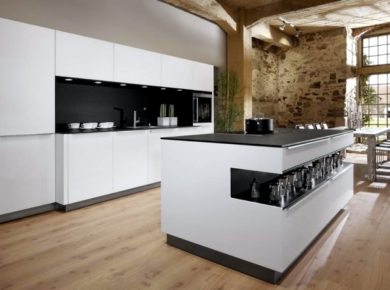
Kreod Pavilion, London
The times when we wanted to master the technique and destructive nature, is over. A new era begins with innovative methods to improve the technical and aesthetic properties of the materials. A number of new materials have revolutionized the art and to support the development of sustainable architecture, construction and design. The team of experts in the subjects of the British Council, which specializes in technological optimization of natural materials, highlights the benefits of using this Werktoffe. The examples show that the use of innovative techniques and advanced methods of modern and competitive products can be produced.
Naturwerstoffe sustainable development based optimized and technical progress

Barajas Airport, Madrid
Invention of new materials based on natural ingredients contribute to harmonious relations with the surroundings and the environment. They compete with synthetic products have been established. Unlike them, optimized natural materials are more efficient in use, biodegradable, recyclable, durable and attractive. Their unique properties open up new horizons for architects and designers.
Innovative production techniques improve the material world

Deeply committed to sustainable development is the manufacturer Cosentino Spanish. It focuses on the responsible production of natural products from raw materials. Product Family Prexury Silestone has a strong elastic material, which consists of fossils and semi-precious stones. E 'therefore very suitable for cladding and interior design.
Silestone nebula comprises a mixture of stone with a proportion of 94% quartz

Physical changes in the construction

Thank production processes controlled by developed, producing new ways for the surface treatment of materials that are more practical and less expensive innovative computer. The traditional way of working of natural stone surfaces for a long time and asking hand. Lithos used for this incredible computer modeling to design three-dimensional mosaic and 5-axis CNC. The costs incurred by careful processing of natural stone surfaces have a structure and function as modular elements geometische separation in interior design.
Organic materials optimized revolutionize architecture and design

Natural materials for their intrinsic form used various purposes. Thanks to the use of new techniques of production of bamboo can replace the traditional wooden architecture and design. Bamboo is a rapidly renewable natural material with functional and aesthetic properties. Moso – producer of the Netherlands focused on the development of new sustainable bamboo products. Among the wide range of boards, veneers, panels, blocks and others are to see. Bamboo products can be extremely nahhaltig in construction. They differ in their appearance – the method of charring of sugar, the color changes.
Development of new products bamboo

New natural materials for reform of the background

This is the new terminal at Barajas Airport in Madrid, designed by Richard Rogers Partnership. The lower part of the roof was covered with Moso bamboo slats slightly curved. The surface area of 212,000 m2 is an architectural gem.
Technically optimized Verbundwerstoffe

Here you should not only be limited to homogeneous natural products. Technical materials are essential for the development of sustainable products. They are made of quality associated with specific requests and specialty compounds. The "FluidSolids," an invention of the composite designer based in Zurich Beat Karrer was made from agricultural waste and natural products. And 'odorless, non-toxic and completely biodegradable. Using techniques already used in the thermoplastic may be in the form of color and material. The organic binder allows the production of objects in limited editions or small series.
Organic ligands FluidSolids

Natural material – odorless and biodegradable

Architonic Concept Space IV

Place of design fairs with the sculptural character is created with FluidSolids.
With chemical methods revolutionized materials with exceptional properties

Photo by James Brittain
Because of changes in the chemical structure and form, at the molecular level, the performance properties of a material is known to improve. Plato Wood is a new product from chemically treated lumber. He served as the base material for coating Old Bearhurst project in Kent, England by architects Duggan Morris.
Basic Materials Natural technically optimized

Other products on the market with more than chemical processes are improved THERMOWOOD character, Accoya and Kebony – Competitive and sustainable alternative to the slow wash Topenholz and hardwoods.
Bridge Accoya – Moses Bridge Halsteren, The Netherlands RO & AD Architecten-

Wood treated with industrially Kebony Kebonisierung – makes a polymerization process. Classic wooden material is impregnated with organic waste liquids. The biopolymer produced technically furan strengthens the structure of the cell walls. Wood so treated is durable, insect resistant, durable, dimensionally stable, free of toxins the fungus. As a side effect the change of color is called.
Material maintenance Kebony

Innovative materials found in the architecture and design of biopolymers used by living organisms and are reinforced with natural fibers. Bio-composites are used as an alternative to polymers reinforced with glass fiber.
Reinforced Kreod Pavilion in London by organic compounds from natural fibers

Louisiana Pavilion Danish office 3XN – Louisiana Museum of Modern Art

Promoting growth through green structures

Green roofs, facades, plants and vibrant urban farms have long been a part of the architecture of the city and contribute to air purification in general. The integration of nature into an architectural system has been put under control. The vertical garden Benetti Moss, consisting of flat panels stabilized, embedded in a resin, is a product of Benetti. It is suitable for use in interior and regulates humidity. The lichen does not require special care, is robust and thriving, even in the absence of direct sunlight.
Vibrant wall BenettiMoss

Use biological mechanisms

Arup presented at the Hamburg International Building Exhibition, the ambitious project BIQ house facade "bio-adaptive". Elements of the glass facade provides housing for a plurality of micro-algae. Live micro-algae growing in the building and offer sun protection, privacy protection, thermal and acoustic insulation. Bodies absorb solar energy and heat the water in a tank of hot water. Ancient algae are harvested and fermented in a biogas plant – this energy is generated again.
The microalgae that live in the building

Photo: © Colt International, Germany Arup, SSC GmbH
8 House of BIG Denmark, Copenhagen – the installation of the green roof

Good House by RO & AD Architects in Roosendaal

Photo: Erik Stekelenburg
Solar Powered Laser Cutter

The search for new natural energy sources and their use as a tool designer Markus Kayser created in 2010 laser cutting, which is powered by solar energy. This results in a device of solar energy with mechanical cutting and rays through a lens glass filter cutting segments 2d.
Capture solar energy

Photo by: Amos Field Reid
The unit of solar sintering Kayser uses sunlight to melt the sands of the Sahara desert. Fixed objects are transformed into 3D printing technology SLS. A 2008 study by the architect Magnus Larsson and durchgeführ Ltd ordinary. shows that the bacteria can be used to transform the large sandstone formations in the desert. The D-Shape printer 3d organic huge, designed by Foster & Partners office is extremely convenient in hard to reach areas, as the building material is produced on site. Flight Technology angesiegelte a day on top of buildings moon come into use to generate the lunar soil.


VIA Architonic
